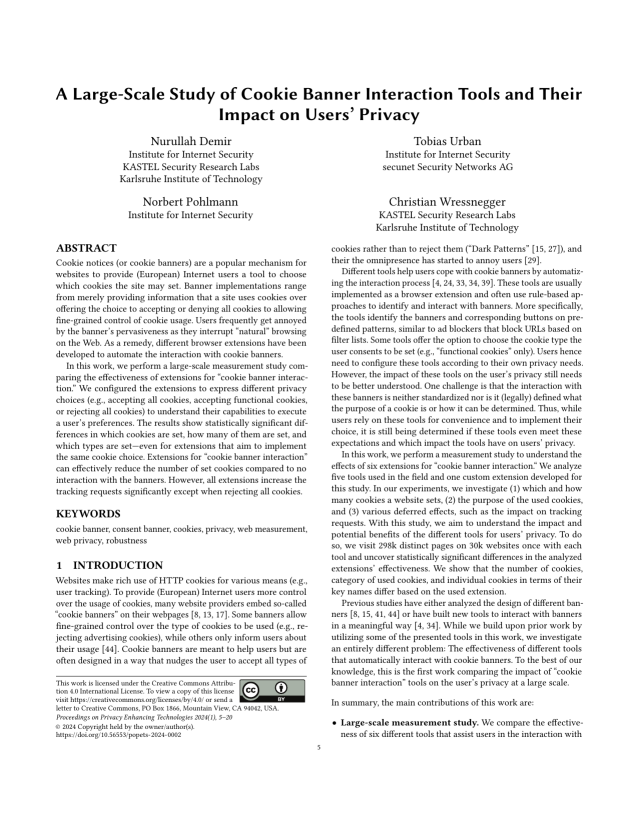A Large-Scale Study of Cookie Banner Interaction Tools and their Impact on Users' Privacy
Authors: Nurullah Demir (Institute for Internet Security & KASTEL Security Research Labs & Karlsruhe Institute of Technology ), Tobias Urban (Institute for Internet Security & secunet Security Networks AG), Norbert Pohlmann (Institute for Internet Security), Christian Wressnegger (KASTEL Security Research Labs & Karlsruhe Institute of Technology)
Volume: 2024
Issue: 1
Pages: 5–20
DOI: https://doi.org/10.56553/popets-2024-0002
Abstract: Cookie notices (or cookie banners) are a popular mechanism for websites to provide (European) Internet users a tool to choose which cookies the site may set. Banner implementations range from merely providing information that a site uses cookies over offering the choice to accepting or denying all cookies to allowing fine-grained control of cookie usage. Users frequently get annoyed by the banner's pervasiveness as they interrupt ''natural'' browsing on the Web. As a remedy, different browser extensions have been developed to automate the interaction with cookie banners. In this work, we perform a large-scale measurement study comparing the effectiveness of extensions for ''cookie banner interaction.'' We configured the extensions to express different privacy choices (e.g., accepting all cookies, accepting functional cookies, or rejecting all cookies) to understand their capabilities to execute a user's preferences. The results show statistically significant differences in which cookies are set, how many of them are set, and which types are set---even for extensions that aim to implement the same cookie choice. Extensions for ''cookie banner interaction'' can effectively reduce the number of set cookies compared to no interaction with the banners. However, all extensions increase the tracking requests significantly except when rejecting all cookies.
Keywords: cookie banner, consent banner, cookies, privacy, web measurements
Copyright in PoPETs articles are held by their authors. This article is published under a Creative Commons Attribution 4.0 license.

